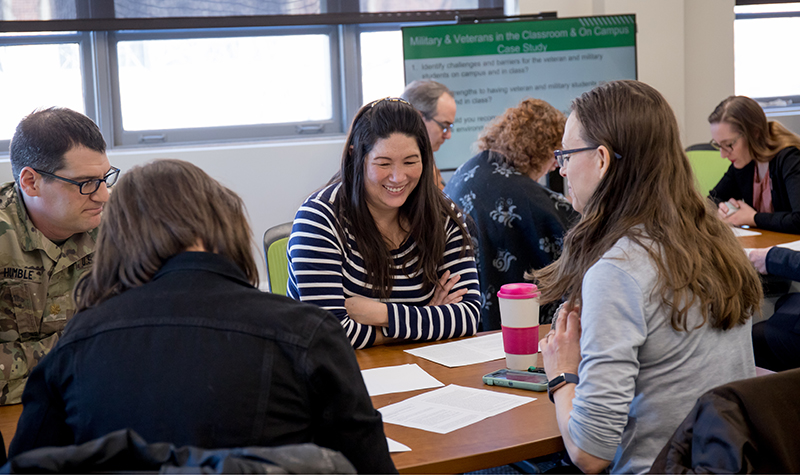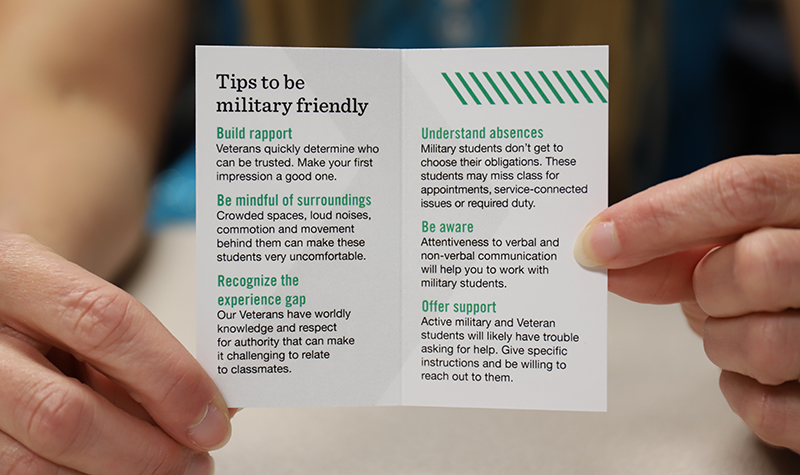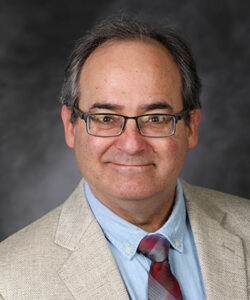From soldier to student: How faculty, staff can help UND’s veterans
Sensitivity and respect can bring out the best in this exceptional population, which is UND’s most diverse, a TTaDA workshop notes

Here’s the scenario:
You’re an advisor at a large, public research institution in the Southeast. Sitting in your office is Alice, a 30-year-old wife, mother of two, veteran of 12 years as an Army medic (including tours in Iraq and Afghanistan) and platoon sergeant in the Army Reserve.
But Alice now now is finding it hard to balance her academic, military and personal responsibilities. Her job makes her responsible for soldiers at work and while she’s in class, which means she often gets urgent phone calls at inopportune times.
Even so, she’s happy to take those calls, because the bond between soldiers has often been compared to siblinghood — a feeling Alice has not experienced in the individualistic and competitive university environment at all. Instead, she finds herself surrounded by students who are younger, less experienced and (she feels) less disciplined than her — students who, nevertheless, seem to be thriving in an environment she finds foreign.
“Alice is stressed and frustrated balancing her military obligations, college coursework and not fitting in on campus,” the scenario concludes.
What do you do?
“Alice” was one of the case studies that University of North Dakota faculty and staff discussed at a recent workshop, “Including Military and Veteran Students in the Classroom.” The workshop was offered by UND’s Teaching Transformation and Development Academy, an initiative designed to foster an inclusive university community by supporting effective teaching and learning.
And the good news is that if Alice had been a UND student, then one very useful suggestion that her advisor could offer would be clear: seek out UND’s extensive veterans’ services. In the Veteran & Military Services office in McCannel Hall, for example, Alice would find tailored advising and tutoring support, help accessing her military benefits, disability services (if, for example, her overseas service had left her with tinnitus and some hearing loss, the most common service-connected disabilities), and …
Something just as important: Fellowship — a place where she could feel comfortable because she’d be among similarly experienced friends.

Military friendly = inclusive
There’s a reason why the workshop was centered on inclusion, said Casey (Carolyn) Ozaki, associate professor of higher education, Faculty Fellow for inclusive excellence and one of the TTaDA workshop’s presenters.
“Our conversations about veterans are very similar to a lot of other conversations that we have about particular populations,” Ozaki said.
“These are really broad and diverse populations. So, as people who work with them, what we can do is be aware of the ways in which they might need support, while also being careful to not make assumptions about what’s happening in their lives. It’s a challenge.”
In other words, UND’s military-affiliated population — which includes all current service members, veterans, their children and spouses, a population that makes up 10 percent of the student body — isn’t the only group facing a balancing act.
Faculty and staff are, too, Ozaki said. They must be aware of the challenges that many vets face, while also not letting such statistics devolve into stereotypes. Not all — in fact, not even most — veterans experience post-traumatic stress disorder, for example.
Similarly, faculty can draw upon students’ experiences in class, but always should do so with respect and sensitivity. A good practice is to ask veteran students ahead of time if they’re comfortable sharing their experiences, said Jessica Reule, assistant director of Veteran & Military Services at UND.
“And a lot of it just comes down to being polite,” Reule said to the class. “You don’t ask a woman how old she is. You don’t ask if she’s pregnant. And you don’t ask a service member if they’ve killed anybody or what it’s like to be in war.
“When working with anybody, you just want to be mindful of how you’re speaking,” she said.

Numerals to follow
A few figures can help put the issue into perspective:
Among military and veteran students in the United States, the average age of beginning higher education was 25, according to data provided by Sherry Lawdermilt, UND’s director of applications and integration support and Goal 6 Champion.
Forty-four percent of student veterans were enrolled in bachelor’s degree programs, while 54 percent were in associate degree or certificate programs.
In 2016, 62 percent were first-generation college students.
Forty-two percent work full-time in addition to going to class. Sixty-one percent take classes online, at night or on weekends.
And about 52 percent complete their degree within four to five years.
These numbers capture the dynamics that can put some military and veteran students at academic risk, Reule said. For example, student veterans tend to be from lower-income family backgrounds, as their status as first-generation college students suggests. So, they may not know college processes or be as well-prepared as higher-income students for college work. Student veterans are more likely to be living off-campus and attending classes part-time, too.
But again, don’t let those statistics become stereotypes, Reule cautioned. And do understand that as many faculty have found, veterans — virtually all of whom have been trained to overcome challenges — can become some of the top students in a class.
“Our military-affiliated students are our most diverse population at UND,” she said.
They also tend to be highly respectful of faculty and other students, clear and straightforward communicators and extremely hard-working. “School is their mission, and they’re going to focus on it and get it done,” she said.
In short, service members’ training and background make them students of exceptional potential. And one key to realizing this potential is for faculty and staff to recognize it, which simply means treating student veterans with tact, understanding and respect.

* * * *
Goal 6 of the UND Strategic Plan is “to meet the educational needs of active duty and reserve military personnel, veterans and their families.” And to help UND achieve this goal, the Veteran and Military Services office created a “Goal 6 card,” which features tips on making UND military friendly.
Among the suggestions:
Build rapport
Veterans quickly determine who can be trusted. Make your first impression a good one.
Be mindful of surroundings
Crowded spaces, loud noises, commotion and movement behind them may make these students uncomfortable.
Recognize the experience gap
Our veterans have worldly knowledge and respect for authority that can make it challenging to relate to classmates.
Understand absences
Military students don’t get to choose their obligations. These students may miss class for appointments, service-connected issues or required duty.
Be aware
Attentiveness to verbal and non-verbal communication will help you work with military students.
Offer support
Active military and veteran students — who’ve been trained to be independent — may have trouble asking for help. Give specific instructions and be willing to reach out to them.



